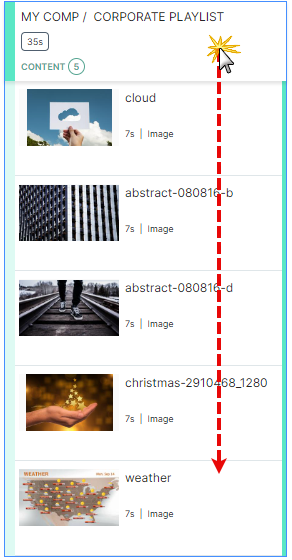The Playlist window
Introduction
Playlists are loops of content (media files, web pages, templates, streaming video) that you use to create your programming.
Depending on their intended use, playlists fall into two categories:
- Playlists intended to be scheduled and played by a QL Player.
- Playlists intended to be displayed inside a template.
Click here for the Playlist video tutorial.
It’s important to note a playlist assigned to the scheduling grid cannot also be assigned to a template at the same time.
If you schedule a playlist, it can only be used for that purpose. The reverse is also true. Assigning a playlist to a template zone means you can no longer schedule it.
It makes sense to name your playlists in such a way their purpose is clear to other users. For example, a playlist named “Template – Left Zone” indicates this playlist is used in the left zone of a template. A playlist named “Morning”, “Weekend” or “Daily” indicates the playlist is scheduled for that time period.
Playlists are created and managed in the playlist window. Each playlist is represented by a colored symbol and the color is automatically assigned by the software at random. This is so the playlist is easier to located in the playlist window or in the scheduling grid.
Playlist hierarchy
Playlists assigned to the top (root) levels are deemed to be “global” meaning they can be assigned to sub-groups directly below the current group.
Global playlists display an abbreviated name that refers to their location. In the example below, the "Global" prefix refers to "Global Demo" which is where the playlist is located. This playlist can be shared and used in any levels below. The higher the playlist is in the group/sub-group hierarchy, the more shareable it becomes.
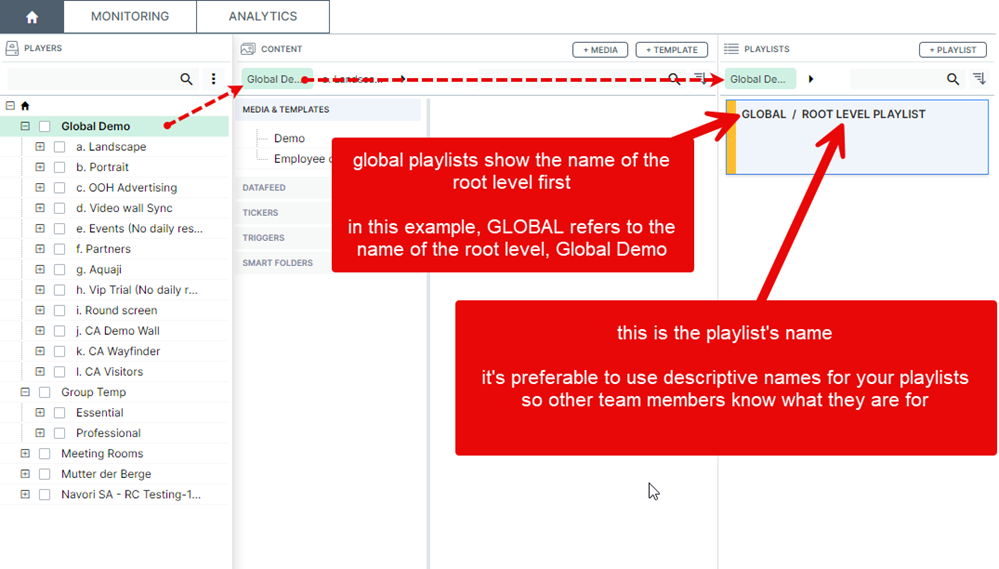
Global playlists show the name of the level they are located on, followed by a slash (/) and the name of the playlist.
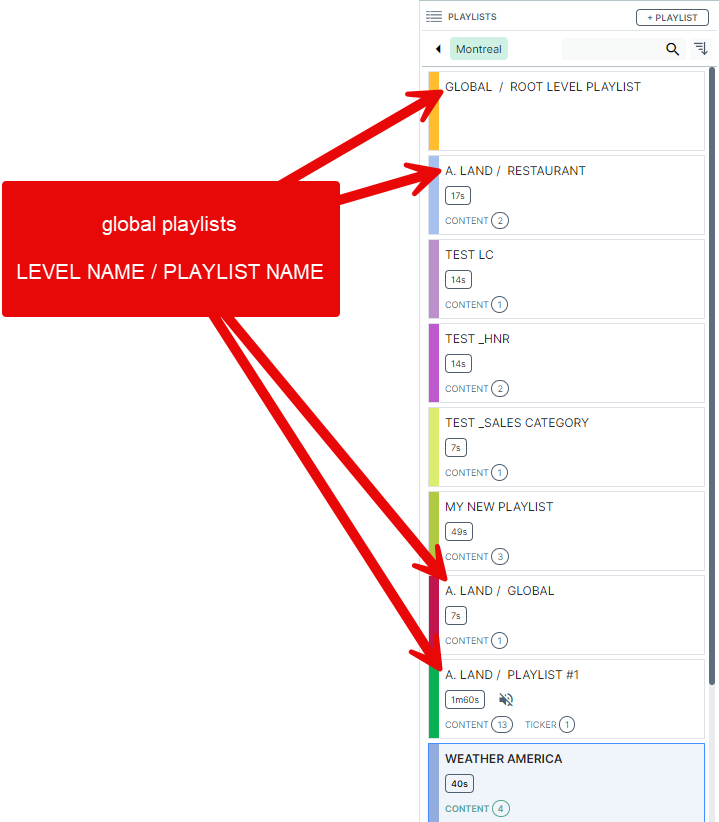
Playlists assigned to the lowest level in the network (level where players are located) are deemed to be “local” meaning they can only be assigned to the currently selected level, or sub-group.
Local playlists do not show any prefix before their names.
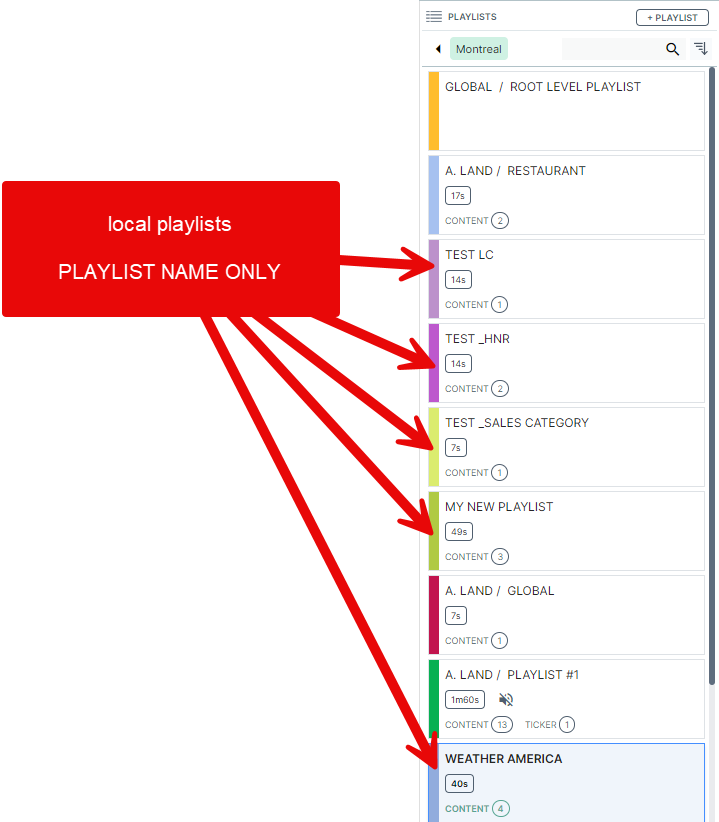
To navigate between levels, either click on a group or sub-group name in the player window, or select the level by clicking on it’s name at the top of the playlist window (also known as "breadcrumbs").
- Clicking on a sub-group name (where players are assigned) will automatically reset the view of the content, playlist and scheduling grid windows.
- Clicking on the group/sub-group name under content or playlist will let you navigate higher in the hierarchy (assuming your user account is configured to access these levels).
If you know there are levels above and you can’t see them in the Content Manager, use the left and right arrows to navigate the levels.
Clicking on a level's name will let you select it's sublevels.
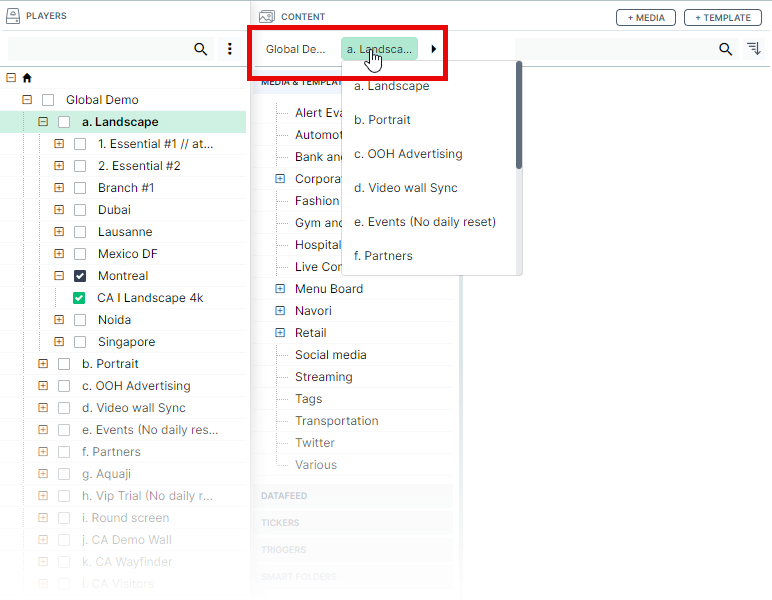
If you can’t see the level you are looking for, contact your server administrator so he/she can modify your access.
IMPORTANT: Changes made to a global playlist will affect every sub-group where the playlist is used. Changes made to a local playlist only affects the current sub-group.
Playlist window details
The playlist window is where you will find all the playlists that have been created in the currently selected group/sub-group.
- The color band representing each playlist.
- The playlist name.
- The playlist duration.
- The number of items in the playlist.

- Symbols that represent the playlist's settings. For example: muted sound, suppressed ticker, random playback.
- The number of tickers assigned to the playlist.

- Click Content/Ticker to toggle view.
Clicking on any playlist will display it's contents (media/templates).
- Each content item’s thumbnail.
- Each content item’s name.
- Duration.
- Type of content.
- Symbols representing validity status (if assigned).
